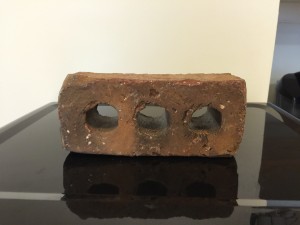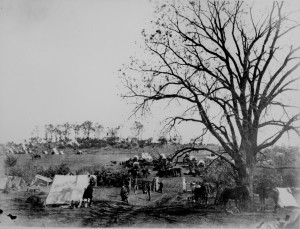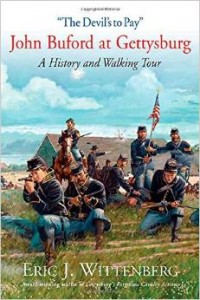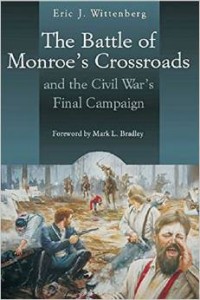On May 28, I posted here that the time had come for the creation of a Virginia state Civil War battlefield park in Culpeper County. The idea is catching on, and we need your help to make it happen.
This article by Clint Schemmer appeared in the June 12, 2015 edition of the Fredericksburg Free Lance Star newspaper:
…Virginia considers creating state park at Brandy Station, Cedar Mountain battlefields
By Clint SchemmerFriday, June 12, 2015 12:00 am
Fredericksburg Free Lance-StarIf the stars align, Culpeper County could be the home of a new state park.
State and local officials are tossing around the idea of creating a park to preserve and spotlight Culpeper’s two most significant Civil War battlefields—Brandy
 A nifty gift just arrived in the mail from my friends at the Civil War Trust. It’s a brick. And I’m thrilled to have it.
A nifty gift just arrived in the mail from my friends at the Civil War Trust. It’s a brick. And I’m thrilled to have it.
You might ask, why? What’s so exciting about a brick?
This brick comes from Tony Troilo’s McMansion that blighted Fleetwood Hill for far too long. When the house was demolished, I asked that the Trust save me a single brick from the house as a souvenir of the fight to save Fleetwood Hill, and this is that brick. I have the perfect place for it in my home office, and every time that I look at it, I will smile, because of what it means. Its presence in my home office means that the …
With many thanks to Clark B. “Bud” Hall, who not only provided me with these two images, Bud was also the one who identified the historic image as being of Fleetwood Hill when it had been mislabeled for years as being a camp in other locales.
 The first image was taken in the fall of 1863. Here’s what Bud had to say about it:
The first image was taken in the fall of 1863. Here’s what Bud had to say about it:
…The view is north, and this is the attack perspective of the 1st Maryland Cavalry as Wyndham’s Brigade attacked Fleetwood on June 9.
The house was “Fleetwood,” built in the 1700’s by John Strode, and was in 1863 the tenant home of farmer Henry Miller. The fruit orchard visible in the ’63 image was destroyed (for
 With many thanks to Dave Roth, the publisher, for giving me permission to reprint it here, here is Rob Grandchamp’s extraordinary review of “The Devil’s to Pay”: John Buford at Gettysburg. A History and Walking Tour that appears in the current issue of Blue & Gray Magazine. I’m humbled by such a wonderful review, which is the finest review any of my books has ever gotten.
With many thanks to Dave Roth, the publisher, for giving me permission to reprint it here, here is Rob Grandchamp’s extraordinary review of “The Devil’s to Pay”: John Buford at Gettysburg. A History and Walking Tour that appears in the current issue of Blue & Gray Magazine. I’m humbled by such a wonderful review, which is the finest review any of my books has ever gotten.
…Award winning historian Eric Wittenberg, who has had a lifelong fascination with Union General John Buford, has researched and authored this tome. It combines the sharp research and intellect that he brings to his work, extensive use of primary manuscript sources, as well as the maps and images that Savas Beatie’s works are
 Here is how Fleetwood Hill looks today, June 1, 2015. This view is taken from the Flat Run Valley, to the south of where Lake Troilo once sat. Thank you to all of you who made this view possible–and especially to Bud Hall, the Civil War Trust, and those of you who made large donations to make it possible, and thank you to Tony Troilo for deciding to violate federal law. No thanks are appropriate for, nor should they be given to, Useless Joe McKinney and the Board of Appeasers, who idly sat by and let it happen in the hope of not offending Useless Joe’s pal, Mr. Troilo.
Here is how Fleetwood Hill looks today, June 1, 2015. This view is taken from the Flat Run Valley, to the south of where Lake Troilo once sat. Thank you to all of you who made this view possible–and especially to Bud Hall, the Civil War Trust, and those of you who made large donations to make it possible, and thank you to Tony Troilo for deciding to violate federal law. No thanks are appropriate for, nor should they be given to, Useless Joe McKinney and the Board of Appeasers, who idly sat by and let it happen in the hope of not offending Useless Joe’s pal, Mr. Troilo.
Fleetwood Hill–the single most fought-over piece of ground in North America–is …
My friend Craig Swain has a very thought-provoking post on his blog indicating that the time has come for the founding of a state battlefield park in Culpeper County, Virginia. I commend it to you.
One would be hard-pressed to find a place with more significant Civil War sites than Culpeper County, Virginia: Cedar Mountain, Kelly’s Ford, Freeman’s Ford, Rappahannock Station, Stevensburg, the winter encampment of the Army of the Potomac, the Battle of Culpeper, and, of course, the crown jewel: the four battles fought at Brandy Station. There are advocacy groups for some of these battle sites such as the Friends of Cedar Mountain, who do a great job at their battlefield. Then there’s Useless Joe and the Board …
This is a guest post by my friend Daniel Mallock which provides food for thought about the role of the historian….
Late in the evening several days ago I was watching an episode of “Chopped”. It made a strong impression on me.
“Chopped” is an hour-long cooking competition television show that pits four chefs against each other. There are three rounds, appetizer, entrée and dessert–there’s a ten thousand dollar prize for the winner. If the judges don’t like a chef’s dish he or she is eliminated from the competition, that is, “chopped.”
For the dessert round Chef Fed prepared an English custard tart and German Baumkuchen combination. A colorful fellow with a hybrid American/German/French accent Chef Fed, obsessed with the …
Part 2 of 2. Cross-posted at Emerging Civil War.
Maj. Gen. William T. Sherman, ever the good soldier, obeyed Lt. Gen. Ulysses S. Grant’s order. He informed his adversary, Gen. Joseph E. Johnston, that the civil authorities in Washington, D. C. had rejected their treaty on the grounds that Sherman had exceeded his authority. He informed Johnston that his sole authority to treat with him was to offer him the same terms that Grant had offered to Gen. Robert E. Lee at Appomattox on April 9, 1865. Davis, opposed the surrender of Johnston’s command under the terms given to Lee, ordered Johnston to disband the infantry and escape with the large force of cavalry attached to Johnston’s army. To …
Part 1 of a two-part series. Cross-posted at Emerging Civil War.
Gen. Joseph E. Johnston learned of the surrender of Robert E. Lee and the Army of Northern Virginia in Wilmer McLean’s parlor in the hamlet of Appomattox Court House on April 9, 1865 several days later. Lee had been trying to outrace the pursuing Union armies in an attempt to link up with Johnston’s army near Weldon, North Carolina. Once Lee’s army surrendered, there was no reason for Johnston to continue the bloodletting—it was over, and the wise old Confederate general knew it. Johnston, also horrified by the assassination of Abraham Lincoln and worried about potential recriminations stemming from it, was eager to end the war. The wily …
 I’m excited and very pleased to announce that one of my favorites of my titles, 2006’s The Battle of Monroe’s Crossroads and the Civil War’s Final Campaign is back in print after being out of print for four or five years. The folks at Savas-Beatie have just released a softcover edition of the book just in time for the commemoration of the 150th anniversary of the battle, which was fought on March 10, 1865. For those attending the 150th commemoration of the Battle of Bentonville next weekend (March 21-22) or the 150th anniversary of Johnston’s surrender to Sherman at Bennett Place on April 18, I will have copies of both editions available for sale there. Signed copies are also available …
I’m excited and very pleased to announce that one of my favorites of my titles, 2006’s The Battle of Monroe’s Crossroads and the Civil War’s Final Campaign is back in print after being out of print for four or five years. The folks at Savas-Beatie have just released a softcover edition of the book just in time for the commemoration of the 150th anniversary of the battle, which was fought on March 10, 1865. For those attending the 150th commemoration of the Battle of Bentonville next weekend (March 21-22) or the 150th anniversary of Johnston’s surrender to Sherman at Bennett Place on April 18, I will have copies of both editions available for sale there. Signed copies are also available …









 Back to top
Back to top Blogs I like
Blogs I like 